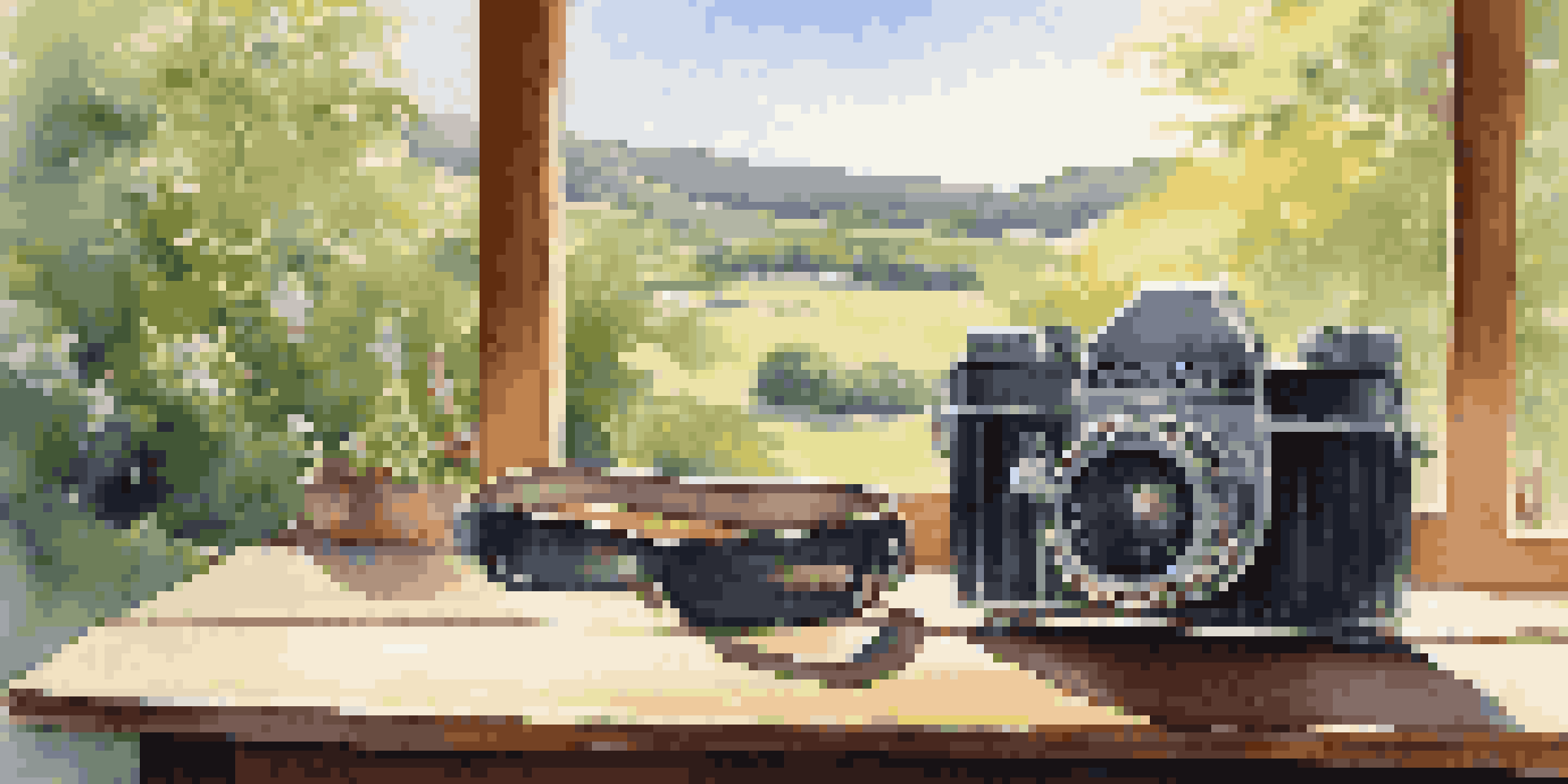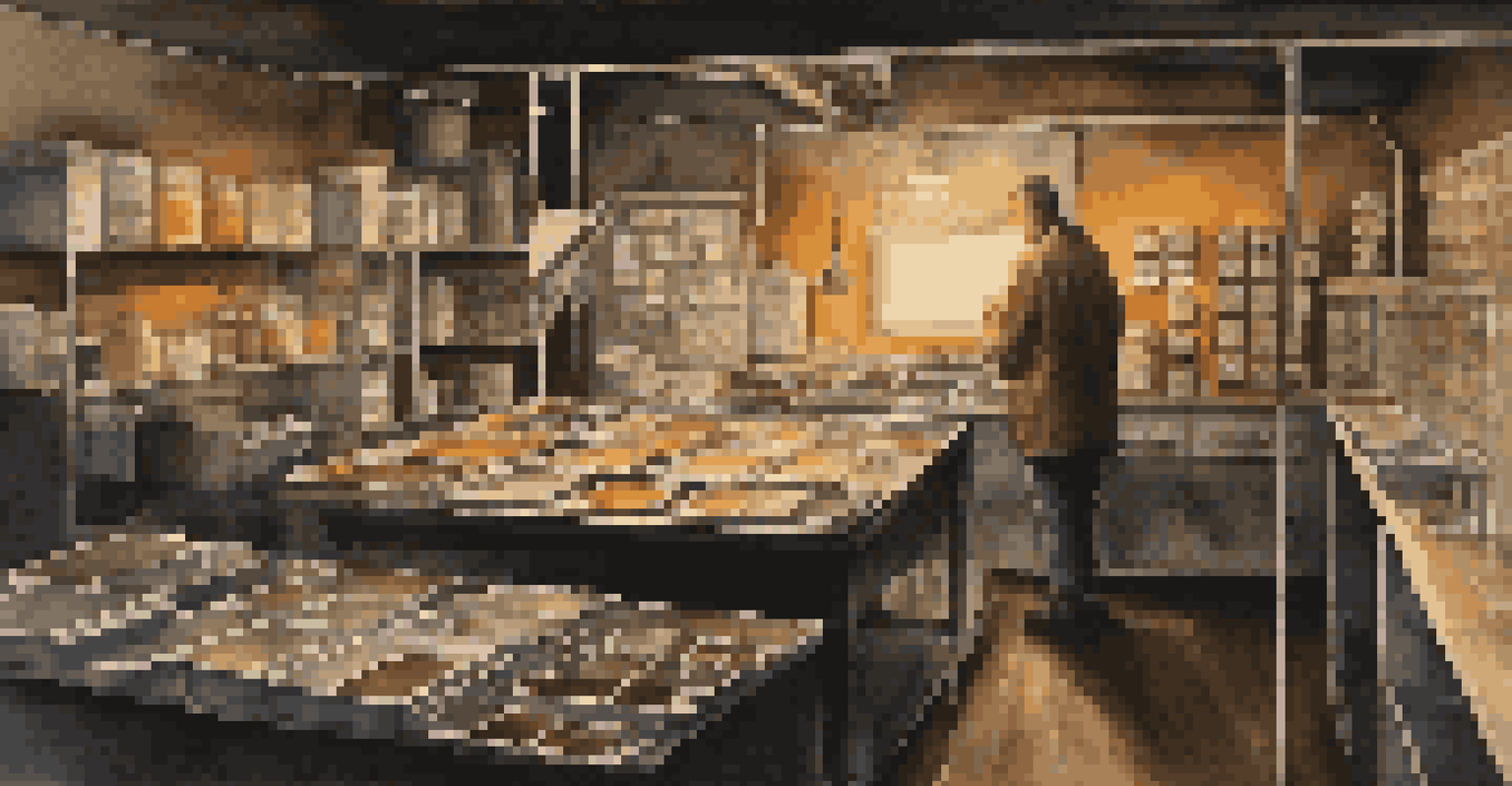The Evolution of Photography: From Film to Digital Techniques

The Beginnings of Photography: A Historical Overview
Photography dates back to the early 19th century, with the invention of the camera obscura and the first permanent photo by Joseph Nicéphore Niépce in 1826. This marked the beginning of a fascinating journey filled with experimentation and innovation.
Photography is the story I fail to put into words.
For decades, early photographers used glass plates coated with chemicals to capture images. This process was labor-intensive, requiring a deep understanding of both chemistry and light. It was a true art form, blending science with creativity.
As the 19th century progressed, advancements such as the introduction of roll film by George Eastman in 1888 revolutionized photography. This made capturing moments more accessible, paving the way for the mass adoption of photography.
Film Photography: The Art of Capturing Moments
Film photography dominated the 20th century, characterized by its unique aesthetic and tactile experience. Photographers cherished the process of developing films in darkrooms, where each image came to life slowly and deliberately.

Different film types, such as black and white and color negatives, offered photographers a range of creative options. This variety allowed artists to express their visions uniquely, from classic portraiture to vibrant landscapes.
Photography's Evolving Journey
From the invention of the camera obscura to the rise of digital photography, the art of capturing images has transformed significantly over the centuries.
Despite its charm, film photography had its limitations, including costs and the time required for development. However, this era laid the groundwork for future innovations, as it honed the skills of countless photographers who would later embrace digital techniques.
The Rise of Digital Photography: A Game Changer
Digital photography emerged in the late 20th century, changing the landscape forever. With the introduction of digital sensors, capturing images became instantaneous, allowing photographers to see results immediately.
A picture is worth a thousand words.
This technology not only reduced costs by eliminating the need for film but also opened new creative possibilities. Photographers could now experiment without fear of wasting expensive materials, leading to a surge in creativity.
As digital cameras became more affordable and user-friendly, photography transitioned from a specialized profession to a popular hobby. Everyone with a smartphone could now capture and share their moments, democratizing the art of photography.
The Transition from Film to Digital: Challenges and Triumphs
The shift from film to digital wasn't without its challenges. Many traditional photographers were hesitant to embrace the new technology, fearing it would diminish the artistry of their craft.
However, as digital techniques improved, even the most skeptical artists began to recognize the advantages. The ability to edit images quickly and enhance them through software like Adobe Photoshop opened up a world of possibilities.
Digital Photography Revolution
The introduction of digital technology has made photography more accessible, allowing anyone with a smartphone to capture and share moments instantly.
Ultimately, this transition led to a fusion of traditional and digital techniques, enriching the photography landscape. Photographers began to blend styles, creating stunning images that paid homage to both the past and the future.
The Role of Social Media in Modern Photography
Social media platforms like Instagram and Pinterest have transformed how we share and consume photography. These platforms allow photographers to showcase their work to a global audience, connecting artists and enthusiasts in ways never before possible.
The instant feedback and engagement from followers can serve as both motivation and inspiration. Photographers often use these platforms to experiment with new styles, receive critiques, and build their personal brands.
This newfound visibility has also led to the rise of influencers who utilize photography to promote products and lifestyles. As a result, photography has become an essential tool for communication in the digital age.
Current Trends in Digital Photography Techniques
Today, photography continues to evolve with emerging technologies like drones and smartphones equipped with advanced cameras. These innovations allow photographers to capture unique perspectives and moments that were previously unreachable.
Post-processing techniques, including HDR (High Dynamic Range) imaging and light painting, have gained popularity, enabling artists to push the boundaries of creativity. These methods can transform ordinary shots into extraordinary works of art.
Future Innovations in Photography
Emerging technologies like 3D imaging and virtual reality are set to redefine how we capture and engage with photography in the years to come.
Moreover, the integration of AI in photography is revolutionizing the editing process. From automatic enhancements to intelligent cropping, AI tools are helping photographers streamline their workflow, making high-quality images accessible to everyone.
The Future of Photography: Where Are We Headed?
As technology continues to advance, the future of photography promises even more exciting developments. Innovations like 3D imaging and augmented reality are on the horizon, offering new ways to capture and experience moments.
The rise of virtual reality (VR) photography could change how audiences engage with images, creating immersive experiences that allow viewers to step into the scene. This could redefine storytelling through visual media.

Ultimately, while the tools and techniques may change, the core essence of photography remains the same: capturing and sharing the beauty of life. As we embrace the future, we carry forward the legacy of those who paved the way before us.